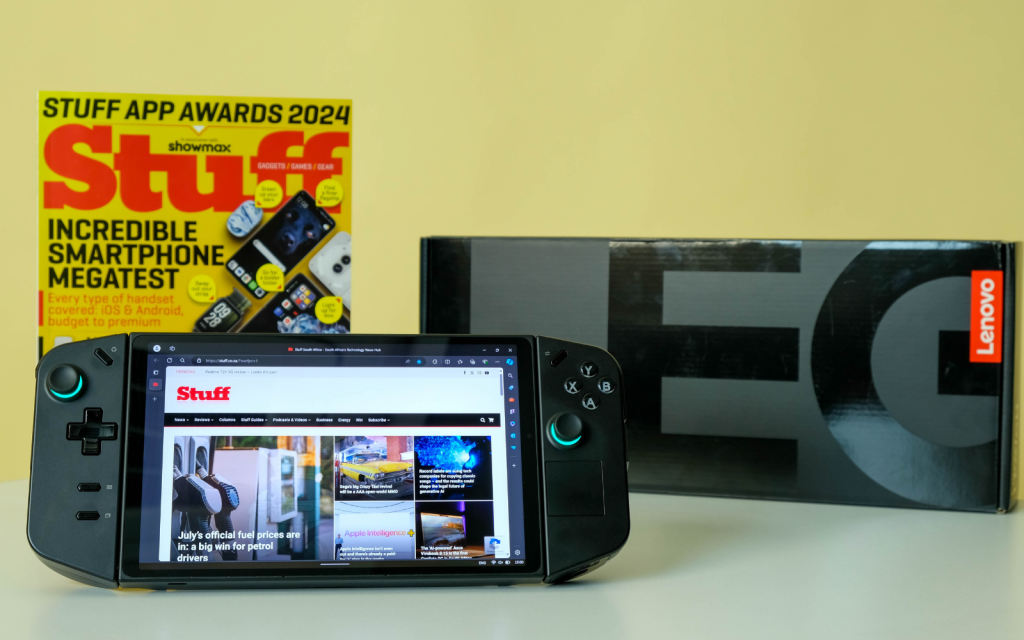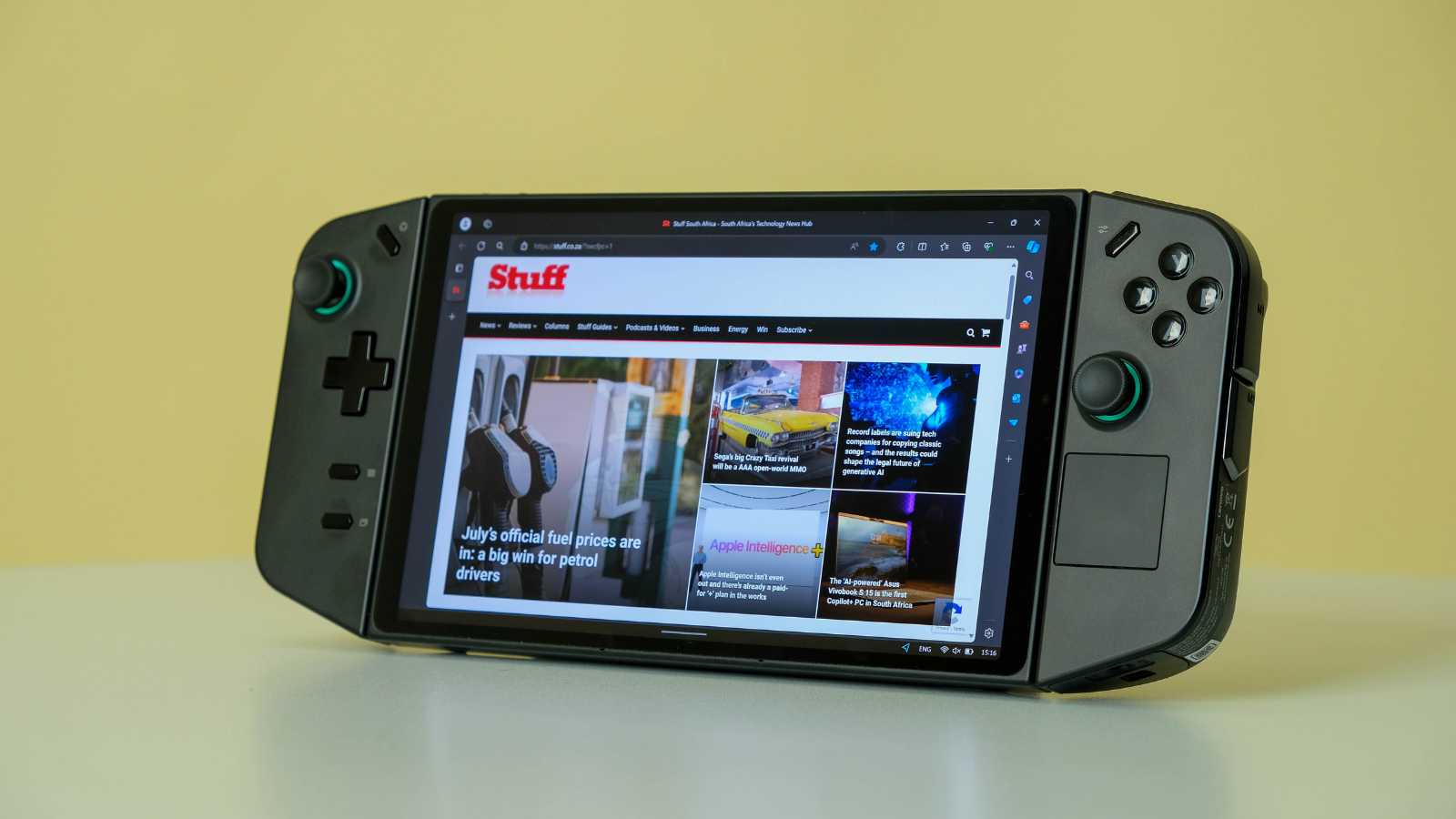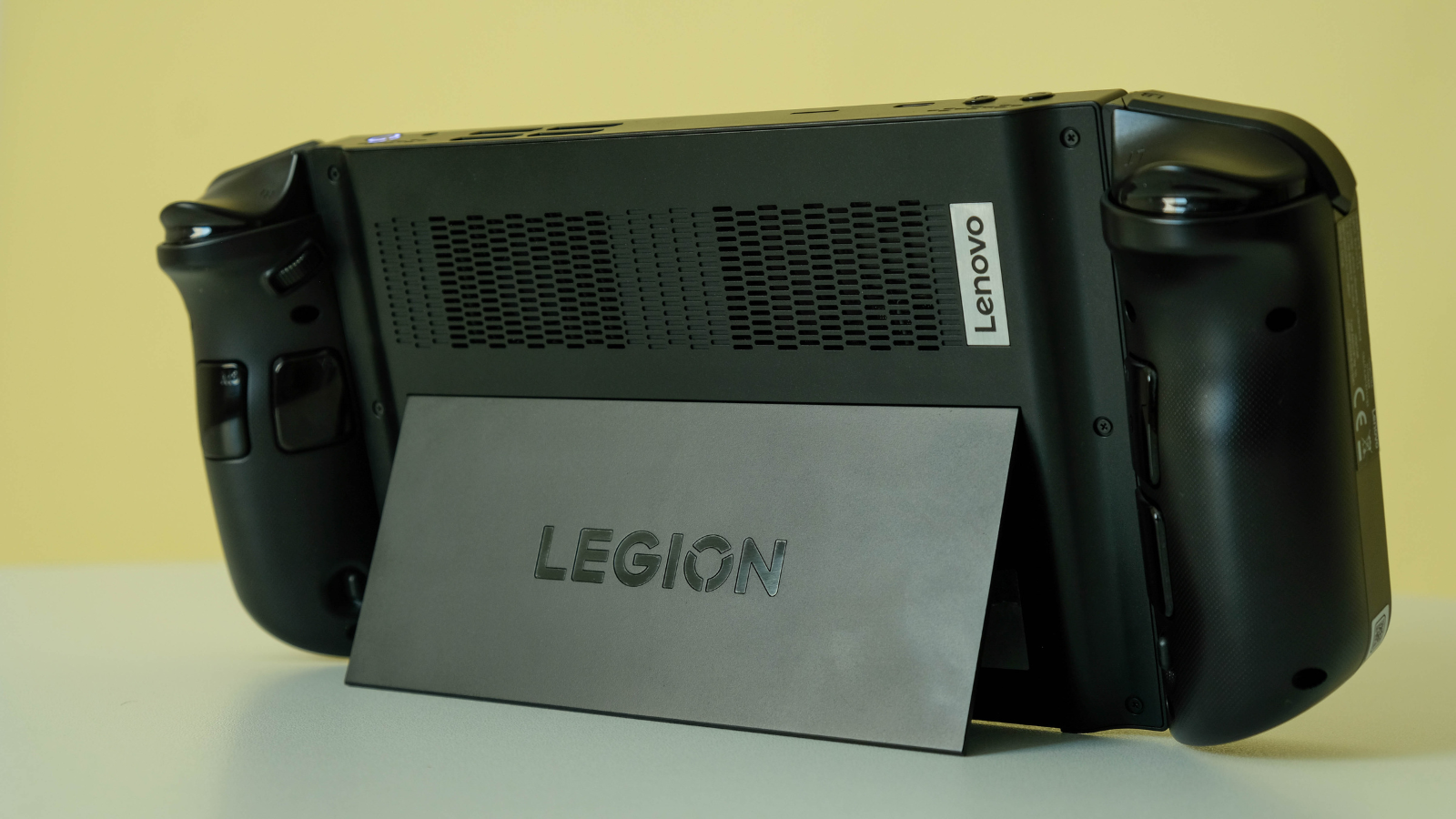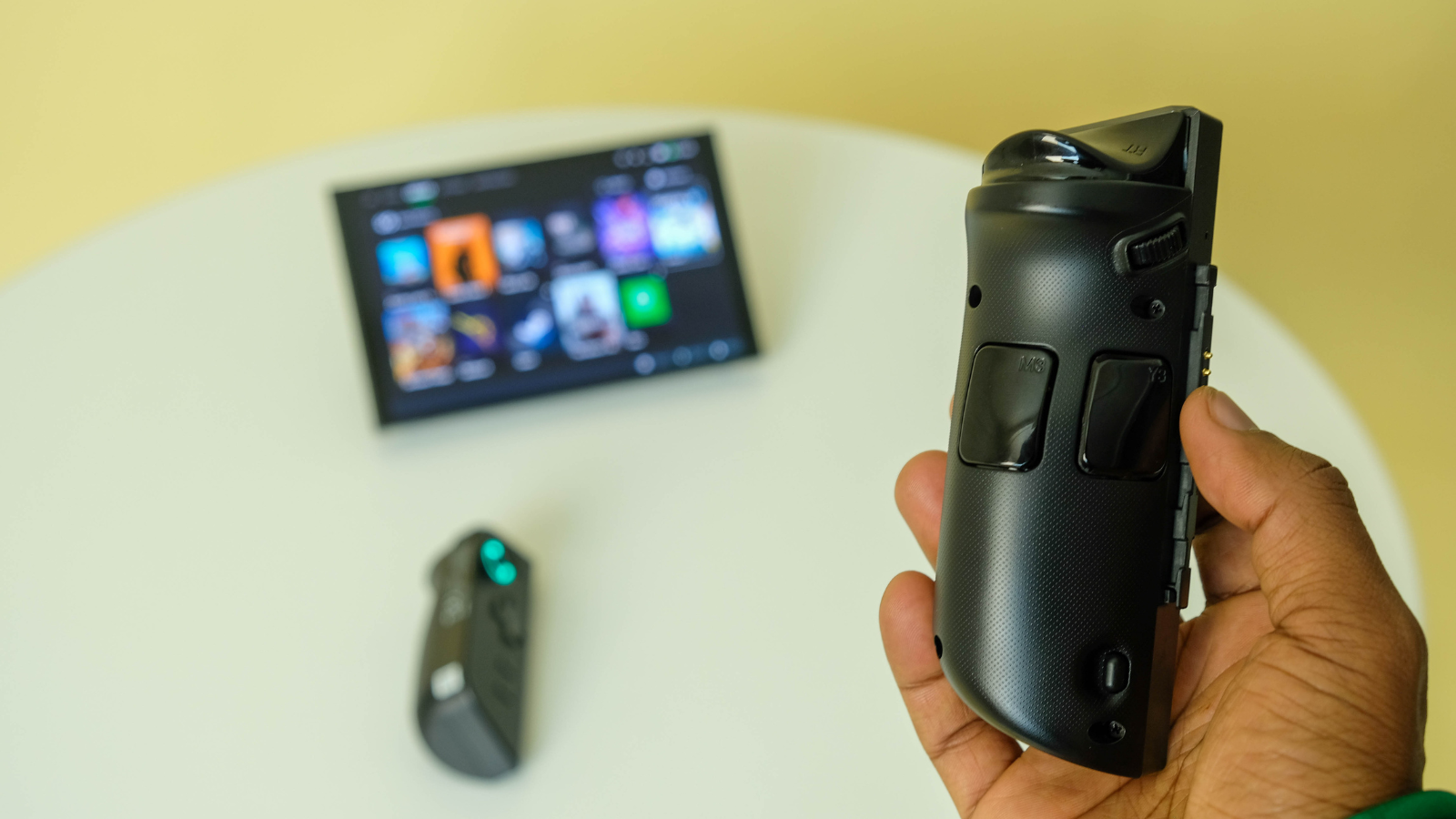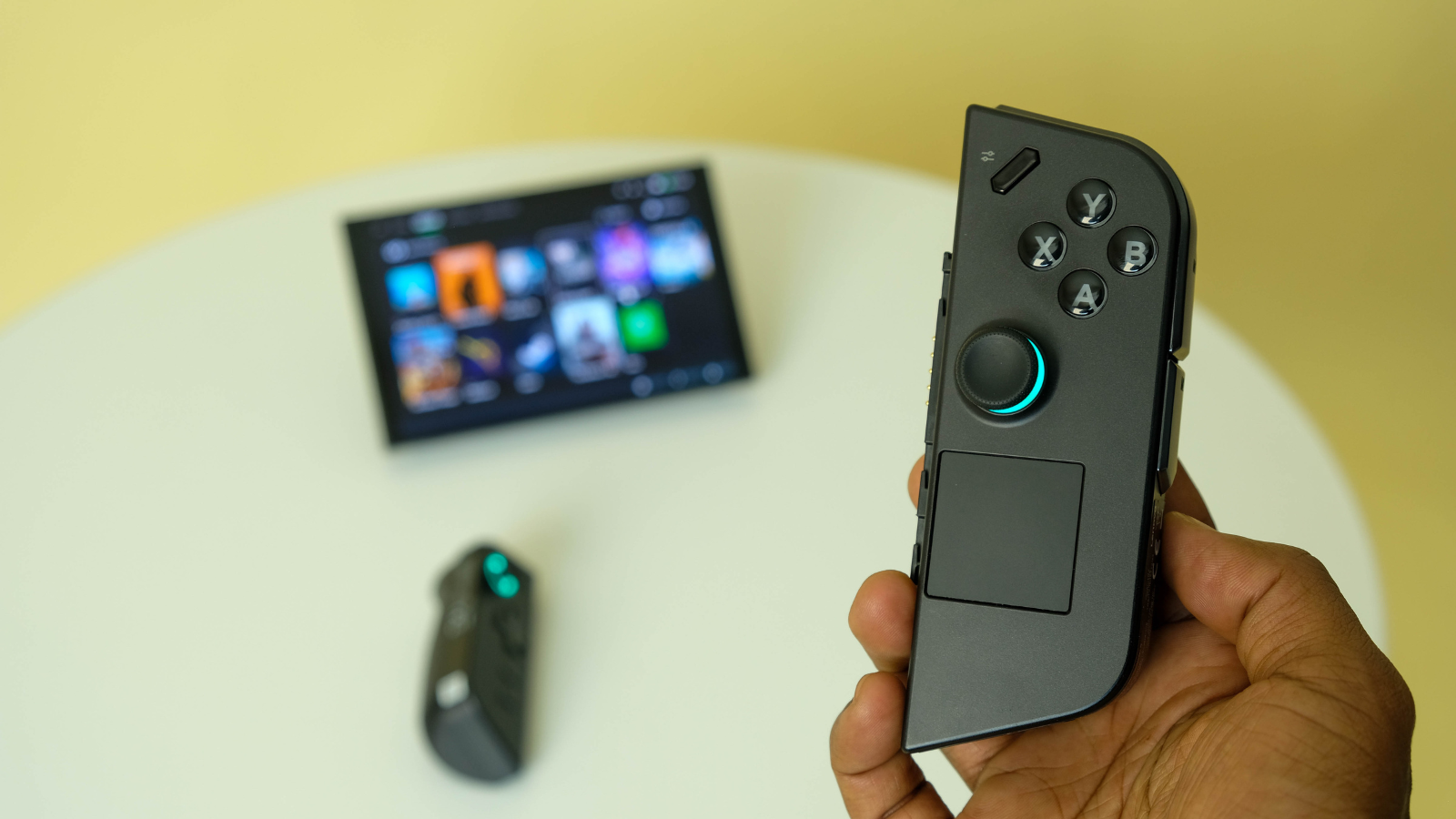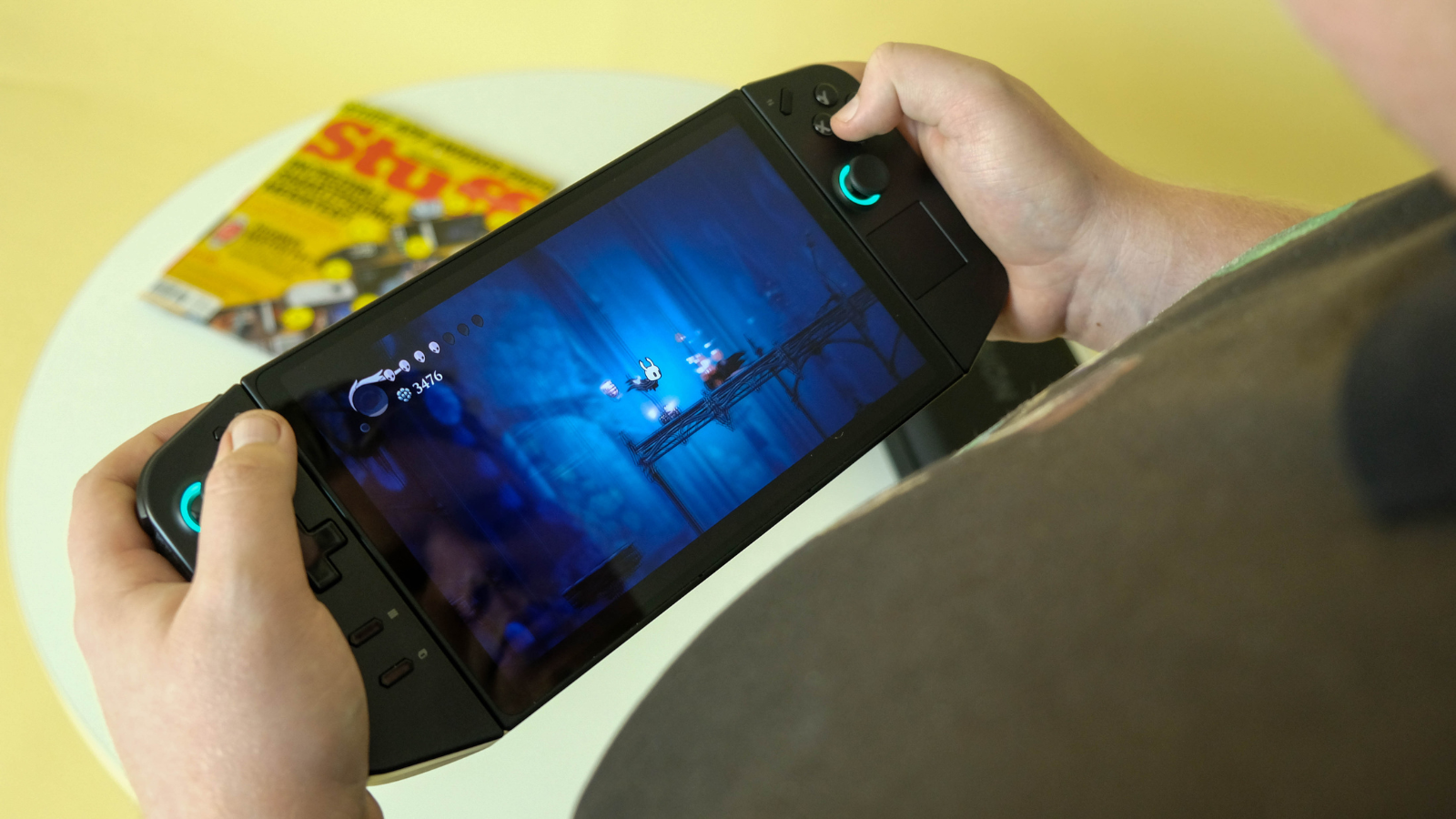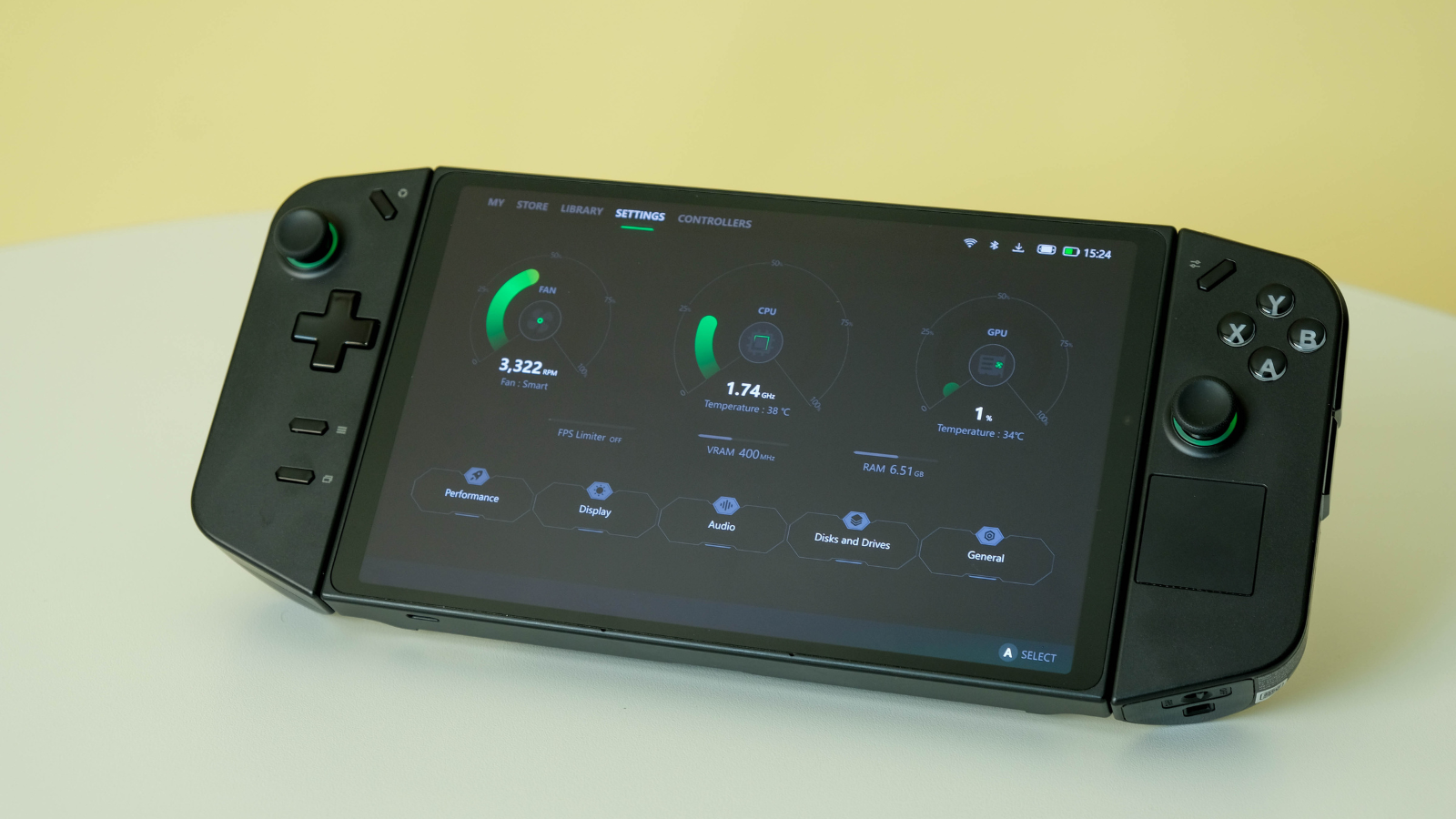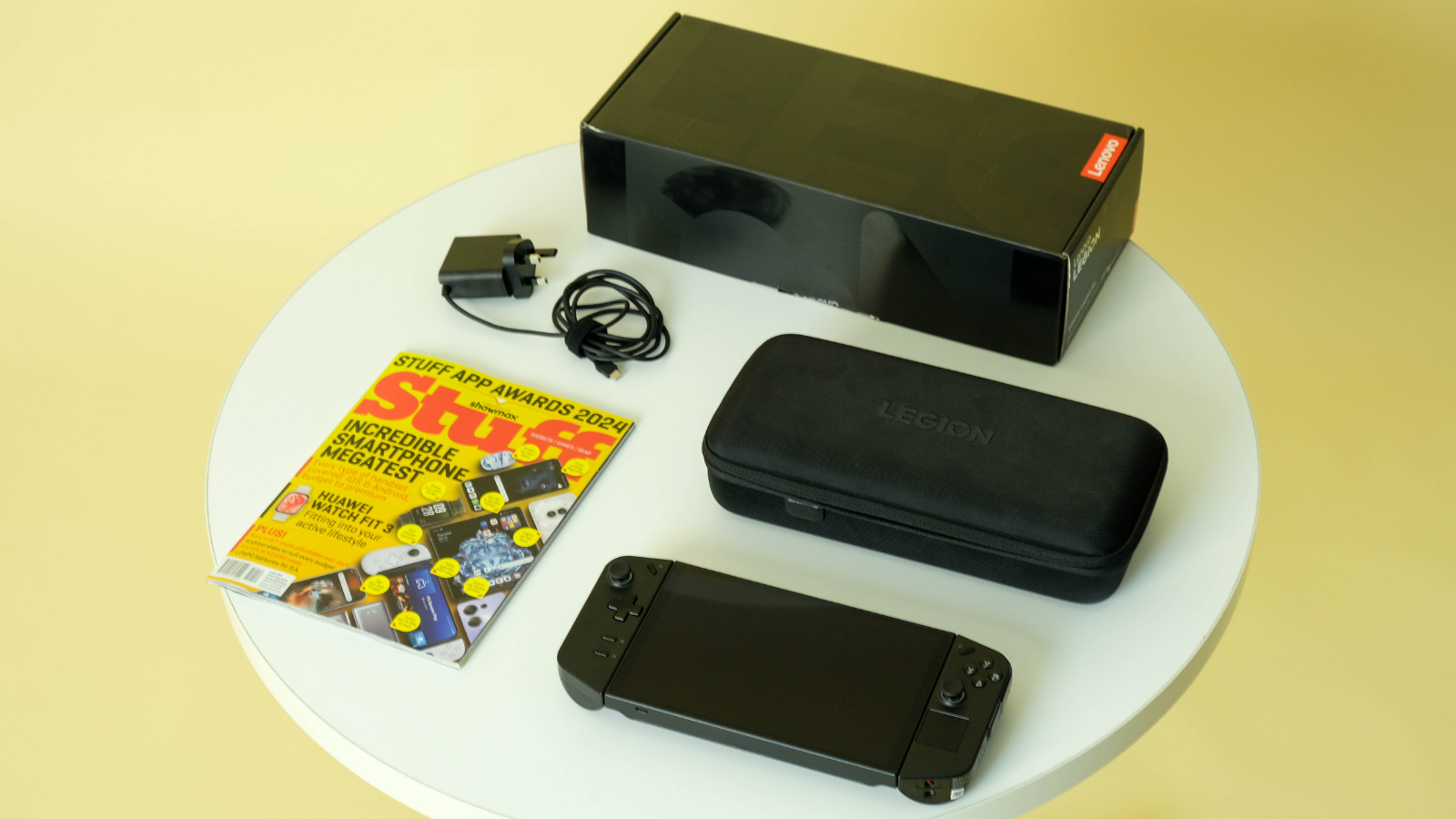Lenovo's first attempt to tackle the PC gaming handheld market has arrived and... it's good. It beats out the competition with a larger display, bigger (but still disappointing) battery and a couple of experimental features that ultimately bump up the price to a high we aren't comfortable recommending when a tighter package could be had for a few thousand less.
-
Design
-
Display
-
Performance
-
Features
-
Controllers
-
Value
It’s finally happened. Those handheld gaming PCs everyone is so infatuated with? Lenovo has officially entered the chat – a little later than the industry’s big hitters like Valve or Asus – but entered nonetheless, taking the form of the Legion Go. It may not have the technical power of the ROG Ally X, or the pizazz of the Steam Deck OLED, but it’s certainly got charisma, moxie, and any other synonym you can think of. That’s something, right?
Well, yes. And no. If we’re dropping R16,000 for a piece of tech, we’d preferably like it to have more than charm going for it, and it should at least do some things better than a more traditional console. Like opening Minecraft really quickly, putting enough frames in front of our eyes to keep even Stuff’s resident PC gamer from bouncing off the walls, or filling some spousal-shaped hole in our hearts. It’ll do… some of those things.
But is it worth the R16,000 price tag? We’ll, uh, let you know at the end of this review. That’s kinda the point of these.
A whole lot going for it
After spending just a few minutes in the Legion Go’s presence, it’s clear that Lenovo has done a good job of cribbing its homework. Where Valve saw the Switch’s stunning success and said “Let’s do that but with a PC inside,” Lenovo took it a step further. It’s obvious once you get a feel for its detachable JoyCon-like controllers or the excellent kickstand around the back.
The rest? Lenovo’s not shy about the fact that it hasn’t come to innovate. It’s gone to the lengths of upping the competition where it thinks matters most – evidenced by the massive 8.8in QHD+ display that has yet to be matched elsewhere – but lacking any other bits that put the rest at the top of the pile. That’s the OLED technology you’d find in the Steam Deck or variable refresh rate found under the Ally’s skin.
And that’s perfectly okay. The handheld PC market is already a hodgepodge of ideas all banking on the Switch’s success, and the Legion Go is simply another hodge for in the podge. It reps a robust chassis that is more than capable of surviving a trip in your bag (even if you happen to forget the included travelling case). Who needs a case when you have steel on to the Legion’s rear and a carbon fibre coating wrapped around the gamepad itself.
All that – the steel and glossy screen – make for a gorgeous handheld that unfortunately we can’t help feeling is a little overweight coming in at 854g with the controllers attached. Ever dropped your smartphone while lying in bed? Yeah. That. Confine your gaming to the couch while Desperate Housewives is on, however – or simply whack it on a desk and play with the detached controllers – and the extra weight will hardly ever be felt.
You’ve got a choice of two USB-C (4.0) ports to choose from – one dominating the Go’s underneath and another sitting atop the device beside the volume controls. Both can be either the designated charging port or chuck up your screen on a monitor, offering decent versatility no matter where it’s positioned.
Sir, a second TrueStrike has hit the Legion Go
Onto those controllers. Lenovo made more fuss than we thought was necessary about those JoyCon controllers *ahem* Legion TrueStrike Controllers. Having experienced them first-hand, though? We’ll admit the hype was warranted. We’ve already mentioned that they’re entirely detachable, but their sturdy plastic coating lends itself to being a comfortably lightweight answer to the monster that is the Legion Go.
Had Lenovo followed through on the blatant copyright infringement, it’d get a couple of extra points for including a grip for the controllers to hook onto when they’re not on the console itself. That… didn’t happen (Nintendo’s lawyers are scary) so we were left with a floating pair of controllers that rarely saw exercise outside their docks.
Those few times we ever took the controllers off the rack weren’t bad. That’s more a compliment to the 8.8in display that allowed us to sit back and relax while it was parked a few steps away, but the TrueStrike Controllers still managed to get their time in the sun. The 900mAh batteries never failed us – though whether that’d change after more than an hour of use… we can’t say.
Since you’ll be holding onto these things for a couple of hours at a time, we should probably mention that they’re an extremely comfortable fit in our larger-than-average hands. It’s a chonker of a device that may not fare as well in a more petite pair of hands, but we never experienced any discomfort. The buttons around the back– of which there are certainly too many – got in our way more often than they were ever useful.
To make navigation simpler, Lenovo chucked in a handy little trackpad for your right hand to get around the place, allowing you to entirely disregard the fingerprint-attracting touchscreen baked into the Go. Further likening itself to a more traditional PC is FPS mode – which can turn the right TrueStrike controller into a mouse at the flick of a switch, and the simple attachment of the accompanying controller base.
It wasn’t exactly for us – being a slightly too clunky and uncomfortable solution for shooters – but if it’s all you’ve got handy during a Call of Duty double XP weekend? You could certainly do worse.
Domineeringly indie
Unlike that one party guest everyone hates, the Legion Go doesn’t turn up to the occasion empty-handed. It’s carrying AMD’s tried-and-tested Z1 Extreme chipset we saw in the ROG Ally, alongside 16GB of LPDDR5X RAM and a 512GB PCIe 4.0 NVMe M.2 SSD to fit whichever Call of Duty you’re playing at the moment.
We never travelled the Activision road, preferring to fill up our storage with a whole bunch of games. Our choices were Rocket League, The Witcher 3, Another Crab’s Treasure, Hollow Knight and Counter-Strike 2 to cover all our bases. Rocket League to put those 144Hz frames to work, The Witcher 3 to look at some fancy shadows, and finally CS to test our mental fortitude.
Bumping up the resolution to ‘ultra’ in a game like The Witcher 3 was never going to result in a refresh rate that wouldn’t immediately make you sick to the stomach. But we did it anyway and even managed to hit the 30-40fps mark while holding onto a decent resolution (1680×1050) after much fiddling with the settings – which mainly involved scaling back just about every setting to ‘High’ (as opposed to ‘Ultra’) and turning Ray Tracing off.
Upping the frames requires a fair knock to the resolution (shooting us down to 800p) but on the relatively smaller screen, we didn’t mind all that much. The same went for Rocket League. But we soon realised that the Legion Go isn’t meant for AAA RPGs or car soccer, at least in our case. It’s meant as a kick up the backside to finally get through our ever-extending backlog of indie titles. And that’s where it shone brightest – striking the perfect balance between consistent frames and decent-looking graphics.
We should mention that our Legion Go model lived in Performance mode, regardless of whether it was drawing power out of the wall or coming to bed with us. You can expect a TDP of around 30W plugged in, and 20W when unplugged. Setting it to Performance does unfortunately mean a certain amount of sacrifice is required to the battery life, but it was one we were willing to make.
Charge me up, Scotty
Look. We’re won’t harp on about the battery life in a package designed to squeeze out as many frames as possible. But the battery life is… bad. Lenovo has at least thrown in a 2-cell 49.2WHr battery capable of scraping a good couple of hours when challenged by something erring on the side of indie. Hand it a AAA game and watch the battery visibly trickle out while you look for a charger.
All that equates to roughly 3hr 24min when tackling an indie like Hollow Knight in one fell swoop and a far less impressive 1hr 26min when dealing with a title with more A’s behind its development. Lenovo makes up for the middling battery life by whacking in some reputable charging tech and a 65W cable that saw our review model go from 5% to 100% in around 80 minutes of charging.
That’s all well and good. But it sorta defeats the point of great charging tech after we noticed we were reaching for the Go’s charger every morning. See, it took us a few goes to realise that the Go wasn’t all that fond of being left to hibernate overnight, preferring to be shut down instead. Every. Single. Night. Even leaving the Go to rest while you grab a coffee is risky unless it’s parked near an outlet.
It’s not a big deal, but it did feel like we were discouraged from picking up the Go when we had the odd five minutes to spare before a meeting or something similar – a complaint you’ll never hear from a Switch owner.
Lenovo Legion Go verdict
It was always going to be difficult for Lenovo to screw this one up. Especially when it’s compiled all the best bits of the competition, and wrapped it up in a 8.8in display and some of the best controllers we’ve fiddled with for quite some time. And yet… the R16,000 price tag is still too high to justify when the ROG Ally is right there.
On a sale that knocks at least two grand off, though? Then we reckon it’s worth the dough, even if only to get those TrueStrike Controllers within your grasp. That’s even considering the unfortunately poor battery life, made up for by the relatively powerful Z1 Extreme chipset and a certain swagger you just won’t find elsewhere.
Despite our issues with the pricing, we were still sad to see the Go, well, go. Give it a few months – just enough time for Lenovo to put out a successor – and we’ll likely see the device’s price crater in real-time, just like the ROG Ally, at which point we’d advise anybody on the fence to immediately commence purchasing.

